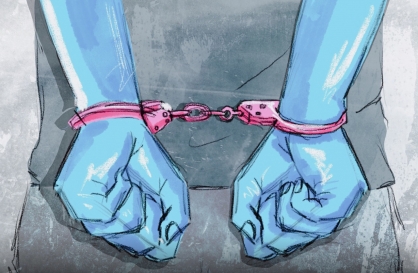Suh Nam-pyo, a Korean-born professor emeritus at MIT with more than 70 patents in mechanical engineering and experience as vice president of the U.S. National Science Foundation, assumed presidency at the Korea Advanced Institute of Science and Technology in July 2006. At the time, he set the goal of making KAIST one of the 10 best research universities in the world.
He followed up with reform measures in the academic structure, curriculum, faculty tenure policy and research systems which were initiated by his predecessor, Nobel-laureate Robert Laughlin, but were largely left unaccomplished by the time the Stanford professor made an early departure. As a Korean with a bicultural background, he had the advantage of better communication with professors at the Daejeon campus and administrators in Seoul as he translated his vision into practice at the state-run institute,
Each time Suh announced new reform steps to drive students to study harder and push teachers into more productive research, the media hailed him, other universities emulated KAIST, and students and professors took pride. Lectures in English were necessary to enhance the university’s global profile with the entry of international students and faculty. KAIST’s place moved up year after year in authoritative worldwide rankings such as the QS-Times list.
President Suh put great emphasis on research in the future-oriented areas of energy, environment, water and sustainability, and chose “mobile harbor” and “online electric vehicle” as national growth engine projects. Donations poured in from Korean and overseas benefactors. In annual conventions of global research university presidents in Seoul, he shared KAIST’s experiences with admiring international educators.
As his first four-year term was about to expire, Suh showed interest in a second term and the KAIST board recommended him for appointment by the Ministry of Education, Science and Technology. However, his second term, which began in 2010, was much less stable than the first one, with growing dissent from professors supposedly under reform fatigue. Critics pointed out a lack of progress in government-supported development projects and emerging favoritism in faculty appointments.
More serious problems were being brewed in the student community. Students complained of stressful campus life in the face of “penalty tuition” amounting to millions of won. Having entered the prestigious school after years of extremely hard preparations, many abhorred continued competition. Four students and a professor have committed suicide since January.
President Suh is not solely to blame for the current crisis at KAIST, although he may blame himself for seeking a second term. Professors, graduate and undergraduate students seem to be almost evenly split about whether the president should leave the university in the middle of the turmoil. Part of them believe his crusade for university reform should be continued while others argue that the school needs a new mode of leadership promoting an atmosphere of cooperation instead of unlimited competitions.
There can be no doubt that innovation a la Suh Nam-pyo was sorely needed not only in KAIST but in any other institutions. The problem in our society is that some necessary reforms can be attempted only by leaders recruited from the outside and that much of their innovative energy has to be consumed in addressing internal resistance.
It may be true that the four students gave up their lives because competition was unbearable, but we do not believe that they killed themselves in protest. President Suh must feel profoundly sorry for their deaths, but he does not have to hold himself responsible. He should decide his future by asking himself if the university needs to continue reforms and if he alone can carry on the tasks.
He followed up with reform measures in the academic structure, curriculum, faculty tenure policy and research systems which were initiated by his predecessor, Nobel-laureate Robert Laughlin, but were largely left unaccomplished by the time the Stanford professor made an early departure. As a Korean with a bicultural background, he had the advantage of better communication with professors at the Daejeon campus and administrators in Seoul as he translated his vision into practice at the state-run institute,
Each time Suh announced new reform steps to drive students to study harder and push teachers into more productive research, the media hailed him, other universities emulated KAIST, and students and professors took pride. Lectures in English were necessary to enhance the university’s global profile with the entry of international students and faculty. KAIST’s place moved up year after year in authoritative worldwide rankings such as the QS-Times list.
President Suh put great emphasis on research in the future-oriented areas of energy, environment, water and sustainability, and chose “mobile harbor” and “online electric vehicle” as national growth engine projects. Donations poured in from Korean and overseas benefactors. In annual conventions of global research university presidents in Seoul, he shared KAIST’s experiences with admiring international educators.
As his first four-year term was about to expire, Suh showed interest in a second term and the KAIST board recommended him for appointment by the Ministry of Education, Science and Technology. However, his second term, which began in 2010, was much less stable than the first one, with growing dissent from professors supposedly under reform fatigue. Critics pointed out a lack of progress in government-supported development projects and emerging favoritism in faculty appointments.
More serious problems were being brewed in the student community. Students complained of stressful campus life in the face of “penalty tuition” amounting to millions of won. Having entered the prestigious school after years of extremely hard preparations, many abhorred continued competition. Four students and a professor have committed suicide since January.
President Suh is not solely to blame for the current crisis at KAIST, although he may blame himself for seeking a second term. Professors, graduate and undergraduate students seem to be almost evenly split about whether the president should leave the university in the middle of the turmoil. Part of them believe his crusade for university reform should be continued while others argue that the school needs a new mode of leadership promoting an atmosphere of cooperation instead of unlimited competitions.
There can be no doubt that innovation a la Suh Nam-pyo was sorely needed not only in KAIST but in any other institutions. The problem in our society is that some necessary reforms can be attempted only by leaders recruited from the outside and that much of their innovative energy has to be consumed in addressing internal resistance.
It may be true that the four students gave up their lives because competition was unbearable, but we do not believe that they killed themselves in protest. President Suh must feel profoundly sorry for their deaths, but he does not have to hold himself responsible. He should decide his future by asking himself if the university needs to continue reforms and if he alone can carry on the tasks.




![[KH Explains] No more 'Michael' at Kakao Games](http://res.heraldm.com/phpwas/restmb_idxmake.php?idx=644&simg=/content/image/2024/04/28/20240428050183_0.jpg&u=20240428180321)












![[Herald Interview] Mistakes turn into blessings in street performance, director says](http://res.heraldm.com/phpwas/restmb_idxmake.php?idx=652&simg=/content/image/2024/04/28/20240428050150_0.jpg&u=20240428174656)
